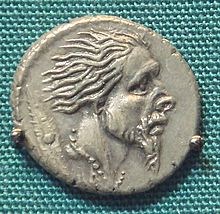|
|
|
|
AlésiaAncient Village / Settlement / Misc. Earthwork
|
||||||||||||||||||
|
|
|
News |
|
France to build biggest archaeological park in EuropeThe oppidum of Alésia is one of the most famous archaeological sites in France, but until recent years it was suffering from its lack of visibility and from the small surface of the museum in Alise-Sainte-Reine... continues... |
 Posted by Chance
Posted by Chance16th May 2009ce Edited 15th June 2009ce |
Images (click to view fullsize) |
|

|
Miscellaneous |
|
|
Alésia - Where and What - en.wikipedia.org Where is Alésia? France, Bourgogne, départ. Côte-d'Or (21), Alise-Sainte-Reine The uncertainty surrounding Alesia's location is humorously parodied in the Asterix volume Asterix and the Chieftain's Shield, in which, in this case because of Gaulish pride, characters repeatedly deny that they know its location ("I don't know where Alesia is! No one knows where Alesia is!"). There have been archeological excavations since the time of Napoléon III in Alise-Sainte-Reine in Côte d'Or near Dijon, which have claimed that the historical Alesia is located there. New discoveries are constantly being made about this Gallo-Roman settlement on the plateau of Mont-Auxois. As a result of the excavations, a find was presented to the museum there with the inscription: IN ALISIIA, which finally dispelled all doubts. What was Alésia? Alesia was the capital of the Mandubii, one of the Gaulish tribes allied with the mighty Aedui, and after Julius Caesar's conquest it became a Roman town (Oppidum) in Gaul. In September, 52 BC it became the legendary site of The Battle of Alesia or Siege of Alesia This was fought by the army of the Roman Republic commanded by Julius Caesar, aided by cavalry commanders Mark Antony, Titus Labienus and Gaius Trebonius, against a confederation of Gallic tribes united under the leadership of Vercingetorix of the Averni, and was the last major engagement between Gauls and Romans, marking the turning point of the Gallic Wars in favour of Rome. The siege of Alesia is considered one of Caesar's greatest military achievements, and is still one of the classic examples of siege warfare and circumvallation. As many as a million people (probably 1 in 4 of the Gauls) died, another million were enslaved, 300 tribes were subjugated and 800 cities were destroyed during the Gallic Wars. The entire population of the city of Avaricum (Bourges) (40,000 in all) were slaughtered. During Julius Caesar's campaign against the Helvetii (present-day Switzerland) approximately 60% of the tribe was destroyed, and another 20% was taken into slavery. |
 Posted by Chance
Posted by Chance16th May 2009ce Edited 15th June 2009ce |
Links |
|
Alésia MuséoParc on UTubeUTube video from the Site archéologique de la bataille d'Alésia (52 av. J-C). Animations for the new, le MuséoParc int Alésia showing the two design arenas due for completion 2010-2011. See http://www.alesia.com from more info. Download the English translation pdf at http://www.alesia.com/fic_bdd/pdf_fr_fichier/11990978440_anglais.pdf |
 Posted by Chance
Posted by Chance17th May 2009ce |
Battle and siege of Alesia on wikipediaThe battle and siege of Alesia is considered one of Caesar's greatest military achievements, and is still one of the classic examples of siege warfare and circumvallation. For more information on this and Caesar's campaigns see Wikipedia |
 Posted by Chance
Posted by Chance16th May 2009ce |

